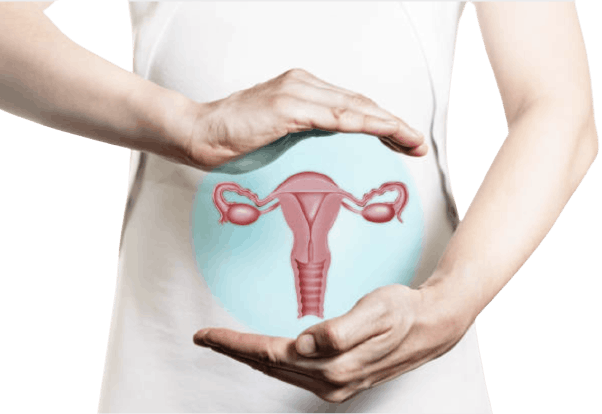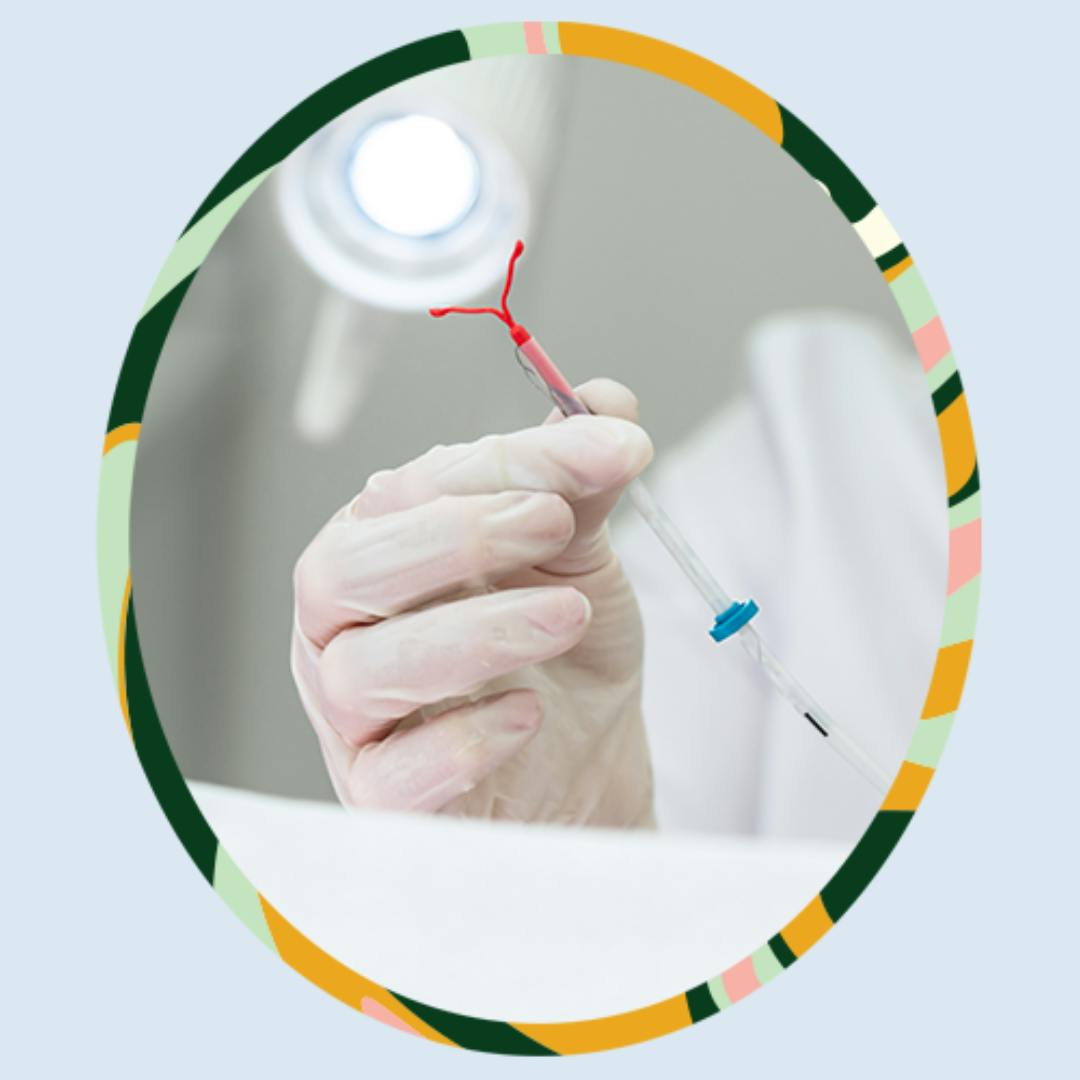Table of contents
1. Choosing a contraceptive method - how does an IUD work?
2. Fitting the IUD coil
3. Side effects of the coil
4. Would I recommend it?
In June 2021, British journalist Naga Munchetty chose during her BBC Radio 5 Live radio show to speak about her experience of having a coil fitted. It was a brave decision, and one that garnered lots of support from women on social media who’d had similarly traumatic experiences. The procedure is considered fairly routine, but in Naga’s words women recognized the pain and trauma which they themselves had previously felt, but were too ashamed to talk about. I was one of the many women relieved to finally hear someone speak about what it's really like.
Choosing a contraceptive method - how does an IUD work?
In October 2019, after more than 6 years of being on the pill, and 6 years of failing to remember daily that I was, in fact, on the pill, I decided to come off of it. I looked through the various contraceptive methods for a replacement and found most of them pretty unattractive.

So I settled on an Intrauterine device (IUD), a tiny T-shaped copper and plastic device which is inserted into the uterus and is more than 99% effective at preventing a pregnancy for up to 10 years.
I did a little research around the procedure, and wasn't too phased - the literature on it framed it as being uncomfortable rather than painful, and the promise of 10 years without falling pregnant lit up like a Las Vegas neon sign to me, whilst the rest of the information barely registered. It seemed having an IUD fitted would be a mild inconvenience.
Fitting the IUD coil
I book the appointment on a day when I’m not working, on the off chance that I’ll be in some discomfort, and even wear my gym clothes for a workout afterwards. Hah.
I’m greeted by a GP and a nurse, and dutifully strip from the waist down. I lie down on the bed and I’m asked to spread my legs by the nurse, in distinctly the least romantic way I’ve been asked to spread them.
The procedure starts without any sort of prologue by my GP, a sort of ‘ripping the band aid off quickly’ approach I assume. A speculum is inserted, as they do with a smear test. The pain is immediate and unbearable. Cramps flood my stomach and as the initial shock leaves, I’m left in breathless and snotty tears.
“
The procedure probably only lasts a couple of minutes, but the pain I feel is like nothing I’ve ever felt before
The nurse has been appointed comforter-in-chief, a strange and forced intimacy that doesn't really work. She squeezes my hand, trying to match the intensity with which I’m gripping hers and tells me: “Remember to breathe poppet, try and forget about what’s going on and look at me”, which seems ridiculous to me. A woman I have met no more than five minutes ago is currently using a device to ram a copper wire into my vagina - it's hardly forgettable.
The procedure probably only lasts a couple of minutes, but the pain I feel is like nothing I’ve ever felt before. I feel helpless, vulnerable, and unable to speak.
The jovial disposition of the doctor and nurse, combined with their lack of sympathy, makes me feel silly for being in this much pain. Even if I could get the words out, I don’t think it would mean much.

When it finishes, I’m left feeling really strange and anxious, like something bad has just happened to me. I want to talk to someone about this, ask them - is it normal that I feel this way? But I’ve come alone, and no one I know has had this done anyway.
I have cramps for the rest of the day, and I learn from Google that the ones during the procedure come from a series of actions. An instrument is used to pull the cervix, straightening out the uterus to make insertion easier. Then they measure your uterus, to ensure the IUD will fit, inducing another cramp. And finally the insertion catheter goes in to place the IUD, which is then pulled back out.
After many hours spent online trying to find women who have shared this experience, I learn that I’m not alone. I feel vindicated in my pain, but angry that this has blindsided me.
Side effects of the coil
There are very few statistics out there covering what the procedure is like, and results do vary, but it appears that for most women it's unpleasant but not intolerable. However for a proportion of women, including myself, the procedure can be truly excruciating.
Businesswoman Lucy Cohen started a petition this year calling for better pain relief for IUD insertions and removals; she’s gathered around 35,000 signatures so far and also asked women to share their experiences of the IUD. 43% of the respondents rated their pain as a 7 or higher, often describing it as “almost unbearable” and “worse than childbirth”.
“
43% of the respondents rated their pain as a 7 or higher
The main side effect of the coil that many women report is cramps and spotting in the first few days, but many also report heavier, longer, or more painful periods. This may improve after a few months, but my own experience is that over two years later mine remain far heavier.
There is a small chance of getting a pelvic floor infection in the first few weeks, of the coil becoming dislodged or your body rejecting it, and of vaginal bleeding and pain - but these things happen very rarely. If the coil is inserted properly, then you should be OK. In rare cases, the IUD can puncture the womb if it is inserted incorrectly.
Much like most other forms of contraception, the IUD does not protect you against sexually transmitted infections, and theres anetdotal evidence to suggest you may experience thrush more.
Would I recommend it?
Despite my painful experience, when I balance the positives of this form of contraception against the negatives, I would certainly recommend the IUD. The procedures to have it fitted and taken out can be very painful for some women, but for others, it can be painless.
In this sense, it’s similar to having a smear test; I myself felt nothing when I had my first one last year, but I know many women dread theirs on account of the discomfort and even pain.

The IUD promises a so-called ‘set it and forget it method’ - once it's in there’s nothing more to think about. It also provides women with the freedom to enjoy sex without the fear of falling pregnant for up to 10 years, which is incredibly liberating.
But although I would recommend it to other women just in terms of its longevity and benefits, the potential pain and emotion of having an IUD inserted is not communicated to us in an appropriate way.
Medical professionals must ensure that women have all the information when they choose to go ahead with an IUD. A conversation and risk assessment should be had between the medical professional and the woman before the procedure, instead of a ‘rip the bandaid aid off’ technique, to ensure actual consent is given, and options such as gas and air, anesthetic, or muscle relaxants should be provided.
My advice to those considering it is to take pain relief medication prior to and after the procedure, bring someone with you who can support you, and don't make any plans for the rest of the day.
The most important thing we can do is talk about contraception more, whether with our friends and family, or with the men in our lives. Most men have no idea of the differences between methods, what their sexual partners have, or even if their partners have one - which is pretty alarming considering the potential consequences.
If we don't talk about the problem, then we won't know what the problem is. When I spoke about the procedure to people, the first question they had was what is an IUD? But men in particular didn't want to hear me talk about it at all. It’s just another example of a society that discourages women from talking about their reproductive systems, and it's just another example of how we are failing women.






